If you live in the Northeast, it’s inevitable: You’ll have to drive in cold and slippery conditions.
Winter driving requires special precautions. Research from the AAA Foundation for Traffic Safety found that about 46% of crashes involving bad weather take place in the winter. And December through March can be an especially busy time for dead batteries, flat tires and vehicle extractions. (We’re here 24/7 to help!)
As motorists’ most trusted advocate, AAA is here to help keep you and your vehicle safe this winter. Check this guide throughout the season for winter driving tips.
Get Your Vehicle Ready
Before hitting the road, you’ll want to make sure your vehicle is up for the challenge ahead. No summary of winter driving tips would be complete without mentioning the importance of having a certified repair technician perform a thorough inspection of your vehicle. Find a AAA Approved Auto Repair shop near you.
You should ask for checks covering each of the following areas.
Battery and Charging System
Have the battery and charging system tested by a trained technician, especially if your vehicle’s battery is more than three years old. Your vehicle will need a fully charged battery to start up during a cold snap.
“Even a good battery might lose up to 50% of its capacity when the temperature drops to zero,” said John Paul, AAA’s Car Doctor and senior traffic safety manager for AAA Northeast. “And even at 32 degrees, it can take up to 30% more power to crank over a cold engine.”
AAA members can request a visit from a AAA roadside technician to test your vehicle battery wherever you are and install replacements if necessary. Members also can visit AAA Approved Auto Repair facilities for battery tests and replacements.
Whether you check or a roadside technician does it for you, be sure that all battery posts are cleared of corrosion and all cable connections are tight.
“Many battery problems can be eliminated by cleaning the corrosion from the battery terminals,” Paul said.
Brakes
Have your vehicle’s brake system inspected by a certified technician as recommended by your car’s manufacturer. You can typically find these recommendations in your owner’s manual.
A brake inspection is needed if your dashboard brake light is illuminated or you notice pulsing, a steering pull, grinding sounds or other unusual noise when braking.
Coolant
Check the coolant level in the overflow tank when the engine is cold. If the level is low, add a 50/50 solution of coolant and water to maintain the necessary antifreeze capability.
“A 50/50 mix of antifreeze and water will protect your car’s engine to minus 34 degrees,” Paul said.
You can test the antifreeze protection level with an inexpensive tester available at any auto parts store. Check cooling system hoses for leaks, cracks and loose clamps, too. Any hoses that feel brittle or spongy when squeezed should probably be replaced.
Engine
Review your owner’s manual to see if your air filter needs to be replaced. Another way to check is to hold it up to a bright light. If light can be seen through much of the filter, it’s still clean enough to work effectively. If the light is blocked, replace it.
Some filters are made of opaque materials that don’t pass light. Replace these filters per automaker recommendations.
Don’t let a lingering check engine light go undiagnosed, and have a certified repair technician investigate any issues such as hard starting or stalling.
Inspect accessory drive belts for cracks or fraying, but stay mindful of newer serpentine belts, which don’t show obvious signs of wear but should be replaced every 60,000 miles or as recommended by the vehicle manufacturer.
Exhaust
Your vehicle’s exhaust system is important. It carries away carbon monoxide and other harmful gases produced by your vehicle’s engine.
Carbon monoxide is odorless and deadly. Have a certified repair technician check your exhaust system for leaks in order to minimize the chances of carbon monoxide poisoning. If your car is stuck in the snow and you have the engine running, open a window and clear snow away from the exhaust pipe.
Ignition
Damaged ignition wires, a cracked distributor cap or worn spark plugs can make starting difficult or cause a sudden vehicle breakdown.
“If the check engine light is flashing this indicates an engine misfire that could be a result of a malfunctioning ignition system,” Paul said. “Driving with a flashing check engine light will permanently damage the engine’s catalytic converter, and that’s a very expensive repair.”
Protect your wallet and avoid a headache by getting in front of potential trouble. Have your vehicle’s ignition system inspected by a certified repair technician.
Lights
Check the operation of all headlights, taillights, brake lights, turn signals, emergency flashers and backup lights. Replace any burnt out bulbs. Dirt and grime on headlight lenses can significantly reduce their effectiveness, and you’ll want your lights working properly to offset diminished visibility caused by winter storms.
“Cloudy headlight lenses can be polished back to like-new condition with specialized kits,” Paul said.
Oil
This is a year-round recommendation, but certainly worth taking care with the rest of your winter prep. Always have your oil changed per manufacturer recommendations. You should have your vehicle’s transmission fluid level checked at the same time.
“Synthetic oil is a benefit in every vehicle and will allow for quicker starts in very cold weather,” Paul said.
Tires
In areas with heavy winter weather, installing winter tires on all four wheels will provide the best traction. All-season tires work well in light-to-moderate snow conditions provided they have adequate tread depth. Examine tires for tread depth, uneven wearing and cupping. Uneven tire wear can indicate alignment, wheel balance or suspension problems that must be addressed to prevent further tire damage.
Tires with fewer than 4/32 inches of tread will have reduced traction in wet and snowy conditions. To measure tread depth, insert a quarter into a tread groove with the top of Washington’s head facing down. If the top of his head is not visible, your tires have at least 4/32 inches of tread and are fine for continued use. If you can see above the top of Washington’s head, it is time to start shopping for new tires.
“To put it simply, worn tires in wet, slippery conditions are flat-out dangerous to you and other drivers sharing the road. Tires with lower tread depths can’t stop as quickly as those with proper depth,” Paul said. “Having tires in proper condition can easily be the difference between a serious crash, and a collision that never happened.”
In extreme climates, a set of winter snow tires or chains may be a wise investment.
Check tire pressure once a month before driving, when tires are cold. As the average temperature drops, so will tire pressures – typically by 1 pound per square inch for every 10 degrees Fahrenheit.
Proper tire pressure levels can be found in the owner’s manual or on a sticker typically located on the driver’s doorjamb. The number molded into the tire sidewall is not recommended for normal operating condition. This specification is for a tire that is carrying its maximum rated payload.
“Cold weather can turn on tire pressure monitoring lights. Don’t ignore the light; have the tire pressure checked and corrected as necessary,” Paul said.
Washer Fluid
Fill the windshield washer fluid reservoir with a winter cleaning solution that has antifreeze components.
Said Paul: “Some window washer solution is rated to just 20 degrees. In cold weather, this solution can freeze and damage the washer system. Look for windshield washer fluid that protects well below freezing temperatures.”
Wipers
Wiper blades should completely clear the glass with each swipe. Replace any blade that leaves streaks or misses spots. Consider installing wiper blades that have a one-piece plastic beam frame or winter blades that wrap the metal frame in a rubber boot. Both designs help prevent snow and ice buildup that can interfere with blade-to-glass contact.
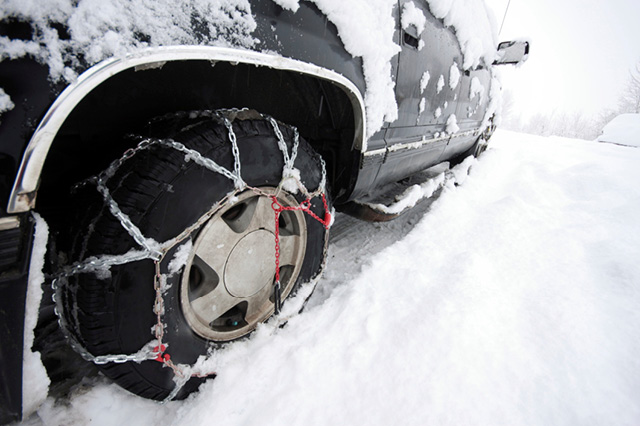
Get Yourself Ready
Prepping your vehicle for a winter drive is great, but you shouldn’t overlook prepping yourself.
AAA’s “How to Go on Ice and Snow” is loaded with great winter driving tips. The guide advises drivers to choose warm, comfortable clothing. Heavy garments and thick gloves are great outside, but aren’t ideal for driving. A zip-fastened, lined jacket and a pair of thin leather gloves are good bets for winter driving. They’re warm, allow movement and are good inside and outside your vehicle.
If you are transporting a child in a car seat, they also shouldn’t be too bundled up. The extra padding of a winter coat can interfere with the child safety seat harness. A light fleece jacket or even securing the child in the car seat and putting their coat on ever them is a much safer solution.
As you would before any drive, adjust your seat so that you are no closer than 10 inches to the steering wheel and you can clearly see the road. Check your mirrors, adjust if necessary, and adjust your safety belt so it sits low across your hips and across the center of your chest.
Sunglasses are always good to have, especially to combat strong snow glare.
Winter Driving Safety
Your vehicle is set and your seat, seat belts and mirrors are in the correct positions. It’s time to drive.
Barbara Ward, a traffic safety specialist with AAA Northeast, has several winter driving tips.
For starters, don’t warm up your car in an enclosed space. Dangerous fumes can turn lethal in a hurry. You also shouldn’t drive if you’re fatigued. That’s a bad idea any time, especially when inclement weather calls for drivers to be alert.
Keep your vehicle’s gas tank at least half full to avoid potential gas station lines, or a frozen gas line, Ward said, and don’t worry about extensive engine warm-ups. They might make the cabin nice and toasty, but they aren’t necessary, even on the coldest mornings.
“Once the car is running, you’ve dialed up your favorite radio station and your seat belt is fastened, drive reasonably until the engine comes up to operating temperature. It’s a more fuel-efficient approach,” Paul said.
Don’t pull away until your windshield is completely defrosted and all snow is removed from your car. That includes the roof, taillights, headlights and side mirrors.
Don’t let speed limits dictate how fast you travel. They’re set for ideal road and weather conditions, Ward said, not slippery pavement. Along those lines, leave additional following distance.
“While a good following distance on dry roads is three to four seconds behind the car in front of you, six to 10 seconds is a good distance on ice and snow,” Ward said.
Even if you have all-wheel- or four-wheel-drive, she added, it will still take you just as long to stop as vehicles with rear- or front-wheel-drive. The advantage of all-wheel- and four-wheel-drive is that it’s easier to get moving on a snowy road.
Moderate is the word to have in mind when accelerating, steering and braking, Ward continued, and if you find yourself in a skid, look and steer where you want to go. Avoid slamming on the brakes. That won’t help anything.
Avoid using your parking brake in cold, rainy or snowy weather. It can get frozen and may not disengage.
If you’re traveling across a bridge at the start of a storm, keep in mind that the surface will likely freeze before typical roads.
Here are a few additional winter driving tips to keep in mind:
- Watch the traffic ahead of you. Slow down immediately – but again, moderately – at the sight of brake lights, skidding vehicles or emergency lights.
- Intersections can be especially slippery as ice thaws from the heat of idling vehicles. “Water on top of ice is a very dangerous situation,” Paul said.
- Lay off the cruise control. Summer will be here soon enough.
- Avoid unnecessary lane changes. Changing lanes increases your chances of hitting ice between lanes, which could cause a loss of traction and, potentially, a crash.
- Don’t power up snow-covered hills. It’s not easy for a vehicle to climb an icy road. If you’re stuck and you hit the gas, you may just spin your tires. If you must climb such an incline, try to get a little momentum going and let that carry you up. When you come to the crest, slow down and proceed cautiously, and slowly, downhill.
- Don’t try to brake on ice if you can avoid it. If you’re approaching an area and you spot ice, apply your brakes on clear pavement to reduce speed. “Black ice, sometimes referred to as flash ice, can catch even an experienced driver by surprise,” Paul said. “Black ice happens when a thin layer of moisture freezes on the roadway, and it can be very dangerous.”
- If you have anti-lock brakes, you can press hard on the pedal. It might vibrate a bit, but that’s normal. Vehicles with anti-lock brake systems allow drivers to brake and steer at the same time, possibly in avoidance of a collision.
- Do not send or read text messages, or engage in other distracting behavior. That’s a critically important piece of advice for winter, or summer, or really any day of any year ever.
Winter driving is difficult for all motorists, but particularly so for new and improving drivers. Learn to become a lifelong safe driver – under all conditions – with the AAA Defensive Driving Course.

Be Prepared for an Emergency
Even if your vehicle is ready for winter and you follow all of the winter driving tips spelled out here, there is a chance you could be stuck with your vehicle for an extended period of time.
Be prepared for such a situation by carrying an emergency road kit with the following items:
- Mobile phone pre-programmed with rescue apps and important phone numbers including family and emergency services.
- Mobile phone car charger.
- Drinking water or sports drink.
- First-aid kit –including any necessary medication.
- Non-perishable food for humans and pets.
- Traction aids (sand, salt, non-clumping cat litter, traction mats).
- Snow shovel.
- Blankets.
- Extra warm clothing (gloves, boots, hats, scarves).
- Flashlight with extra batteries.
- Window washer solvent.
- Ice scraper with brush.
- Cloth or roll of paper towels.
- Jumper cables.
- Warning devices (flares or triangles).
- Basic toolkit (screwdrivers, pliers, adjustable wrench).
Here are a few other tips to remember during such an emergency:
- Stay with your vehicle. It provides shelter and makes it easy for emergency responders to find you.
- Don’t try to walk anywhere, especially in a storm. You could lose track of your vehicle, and if you lost control of your vehicle in a certain area, other vehicles might do the same.
- Don’t push yourself too hard trying to get your vehicle out of the snow. Let a AAA roadside technician help. They do it all the time.
- Let others know you’re in distress by tying a bright cloth to your vehicle’s antenna or placing a cloth at the top of a rolled-up window. You can leave your dome lights on at night, too, which is another reason you’ll want to have your battery checked first.
- Check to see if your exhaust pipe is clogged. If it is, do not run your engine. Doing so could lead to deadly carbon monoxide flooding the cabin.
- If you’ve brought winter clothes, great. If not, don’t be afraid to use floor mats or other items in your car for warmth.
- If your exhaust pipe is clear, you can run the engine and heater for warmth but stay mindful of conserving fuel.
- If you’re embarking on a long-distance trip, check out weather reports or weather apps before you leave. Delay trips when especially bad weather is expected. If you must leave, let others know your route, destination and estimated time of arrival.
Ways to Enhance Your Winter Driving Experience
If you’re looking for advice on what makes a good winter ride, Paul and Robert Sinclair Jr., senior manager of public affairs for AAA Northeast, are good people to talk to. They’re both expert test drivers who have first-hand knowledge of how various vehicles stack up with Northeast weather, and they both believe winter performance starts from the ground up.
Winter tires, a.k.a., snow tires, will improve any vehicle’s ability to tackle inclement weather versus all-weather tires.
“Extra traction thanks to aggressive tread patterns and rubber compounds treated with chemicals keep them pliable at low temperatures,” Sinclair said.
All-wheel and four-wheel-drive are helpful, too, especially when vehicles with these features also have higher ground clearance.
An all-wheel-drive Subaru, for example, is good on snow but you’re more likely to get through deep snow with a larger pickup truck.
“Also, the potholes produced by winter’s freeze and thaw cycles that have most drivers bobbing and weaving in avoidance attempts, and many stranded by the roadside with wheel-bending flat tires, are traversed without a second thought thanks to a pickup’s balloon tires,” Sinclair added. “There’s a recurring theme here. A pickup is the ideal winter vehicle for my money. Besides the over the road prowess, a big roomy pickup is supremely comfortable. With a pickup, a driver will wax poetically, ‘…winter, where is thy sting?'”
As for vehicle weight, driving dynamics is more important to a vehicle’s winter driving prowess than its mass.
“A wallowy, poor handling vehicle in clear weather is going to be a lousy vehicle in bad weather no matter how much it weighs,” Sinclair said. “I’d rather have a light Volkswagen Passat with winter tires than a similarly equipped, much heavier Buick LaCrosse.”
As good as an all-wheel-drive or four-wheel-drive vehicle can be in winter, Paul added, the system doesn’t change basic physics – driving too fast for winter conditions will surely result in a poor outcome on the road.
Should I be using different gasoline in the winter versus the summer?
Believe it or not, you already are.
Gasoline blends change with the seasons. The difference involves fuel’s Reid vapor pressure, a measure of how easily fuel evaporates at a given temperature. The more volatile a gasoline, the higher its pressure and the easier it evaporates.
Winter blend fuel has higher pressure because the fuel must be able to evaporate at low temperatures for the engine to operate properly, especially when the engine is cold. If the pressure is too low on a frigid day, the vehicle will be hard to start and once started, will run rough.
Summer blend gasoline has lower pressure. This prevents excessive evaporation when outside temperatures rise. Reducing the volatility of summer gas decreases emissions that can contribute to unhealthy ozone and smog levels. Lower pressure also helps prevent drivability problems such as vapor lock on hot days, especially in older vehicles.
The Environmental Protection Agency says conventional summer-blend gasoline contains 1.7% more energy than winter-blend gas, which is one reason why gas mileage is slightly better in the summer. The summer-blend, however, is also more expensive to produce, which is why gas prices tend to spike a bit at the start of the summer driving season.
The switch between the two fuels happens twice a year, once in the fall to winter blend, and again in the spring, to summer blend.
As a consumer, the main thing to understand is that there are real reasons for the switch from winter to summer blend fuel, even if it results in some pain at the pump.
What if I don’t want my car out in the snow?
Even the best winter driving tips aren’t enough to convince some drivers to take their prized vehicles out in the snow. Many store their cars in fall, before the worst weather sets in. Here are some tips to make sure you are doing it the right way.
- Start with a wash and wax and check the condition of the motor oil. “A purist will change the oil before and after storage, since oil attracts moisture,” Paul said. “But if yours is in good shape, wait and start the spring with a fresh oil change.”
- Top off all the fluids, fill up the fuel tank and add stabilizer to the gasoline, like you would a lawnmower.
- Cars consistently draw electricity, so either disconnect the battery or use a float charger, which helps it maintain its charge.
- Properly inflate the tires and grease all the latches, locks and hinges, which can stick when a car sits awhile.
- If you have to keep a car outside, keep it off grass or dirt, which can transfer moisture to the car and cause rust. Pick a car cover that breathes and resist the urge to fire up the engine once a week during the winter, because that can actually cause damage, Paul said.
- For motorcycles, top off fluids and add fuel stabilizer, just like a car. Inflate the tires and make sure the treads are still good.
Your AAA membership covers you with 24/7 roadside assistance. If you need us, request service quickly and easily at AAA.com/GetMoving.
This article has been updated and republished from a previous version.
11 Thoughts on “Stay Safe With Winter Driving Tips From AAA”
Leave A Comment
Comments are subject to moderation and may or may not be published at the editor’s discretion. Only comments that are relevant to the article and add value to the Your AAA community will be considered. Comments may be edited for clarity and length.



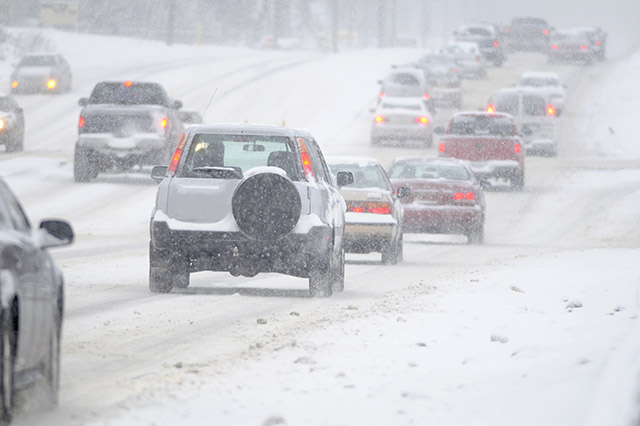


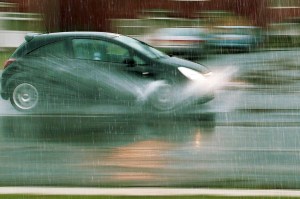



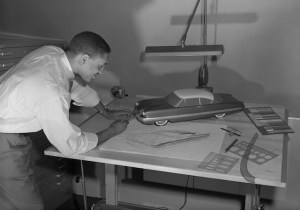




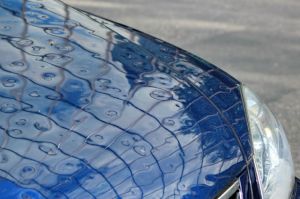
Jump pack with air compressor, light and USB charger for cell phones. Rain poncho, work gloves, Leatherman multi tool, wool blanket, water, food, tow rope, candle in metal coffee can, Bic lighter, UCO matches, roll of Gorilla tape, toilet paper, 5 gallon bucket,pee bottle, proper footwear.This is some of the items I carry. I had been doing search and rescue on land and sea for 38 years. Stay Safe and God Bless.
Excellent and super informative article! Thank you!
Excellent information/reminders! Thank you!
Having been in a snowy pileup on the interstate and have seen cars ,busses and trucks out of control running into the pack of stopped cars, i notice that when cars are stopped drivers usually put their car in park and take their foot off the break. Therefore there is no warning for the cars coming up from behind. It should away be told that hazard lights should be turned on if you have come to a full stop and and have no way to move forward or out of the way.
Hi Linda, you’re absolutely right, hazard lights should always be on when broken down or pulled over. We highlight that and other points in this article: AAA.com
Please remind readers to ALWAYS clean snow off the roof of their car; flying snow is sooooo dangerous, and leaving it to fly onto fellow drivers is both dangerous and selfish.
Seems like an obvious thing but obviously is not.
Very practical information.. even if someone is an experienced driver, it is a good review.Thank you for sharing.
Good info. It would be nice if this could be set up as a down load that could be forwarded to a new driver in the family who lacks experience and doesn’t have AAA.
My 18yo daughter has AAA, but probably won’t read this unless I send it to her so I copied & pasted.
Interesting. Very helpful information.
Very good guideline